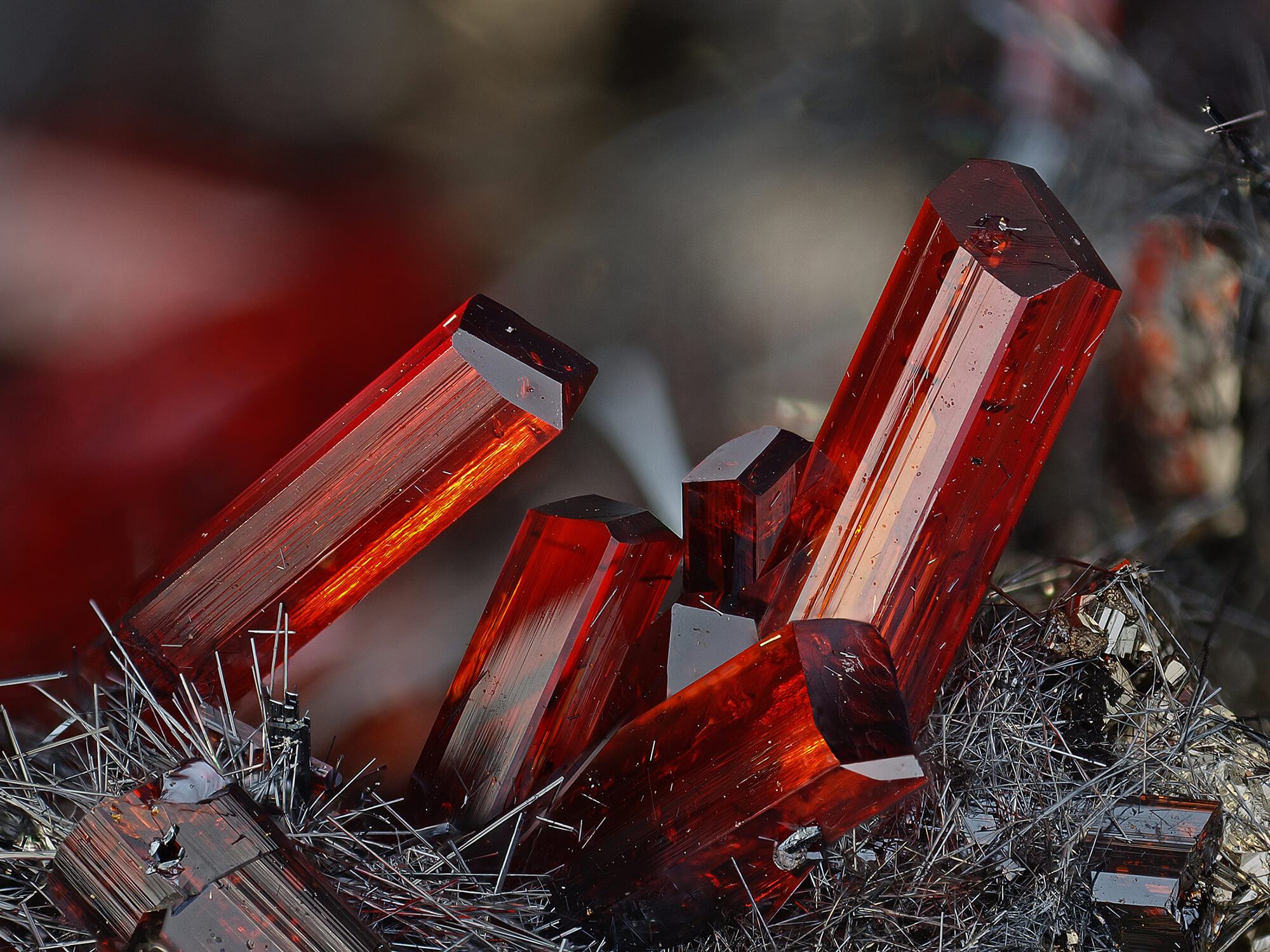Minerals of the Carpathians
permanent exhibition
The 1500 km long mountain range of the Carpathians that extends from Dévény to Al-Duna is a geographical category in the first place. Regarding its geology, it can be divided into highly different sections. Its area is shared among six countries, namely the Czech Republic, Slovakia, Poland, Hungary, Ukraine and Romania. In a mineralogical sense, it is a very interesting place, since from the 4700 mineral species known in the world, almost 1300 can be found here. The number of minerals that were first described from the Carpathians is about 70.
The minerals of the Carpathians have been mined since the prehistoric age. Its diversity is known since the time of Agricola that is from the 16th century. First written records about mineral collecting can also be originated from this era. In the course of time, several collections have been established, but these were destroyed during the stormy history or remained only fragments of them.
The department of mineralogy in the Herman Ottó Museum was established in 1980. Its chosen profile was the collecting, preservation, scientific processing and displaying the mineral associations of Hungarian sites as best as possible. In the last century, collecting minerals from beyond the country borders also became highlighted. Due to its systematic collection improvements, the Herman Ottó Museum has the largest and most complete collection of minerals in Hungary.
The Minerals of the Carpathians permanent exhibition, which is located in the southern block of the Pannon Sea Museum, shows the mineral world of the mountain in 2 stores in 140 m2 through nearly a thousand specimens broken down by geographical areas from west to east. Compilation of the material was determined by both scientific and aesthetic reasons. We can encounter minerals, which can be collected even by us on an excursion, but we can also get an inside view of the wonderful world of specimens collected from the depth of mines. Several pieces with internationally significant value can be seen here: e. g. rock-salt from Wieliczka, quartz from Banská Štiavnica (Selmecbánya), pseudomalachit from Ľubietová (Libetbánya), mellit from Csordakút, malachite and azurite from Rudabánya, antimonite from Băiuț (Erzsébet-bánya), rhodochrosite from Cavnic (Kapnikbánya), andradite from Ocna de Fier (Vaskő) and Dognecea (Dognácska) and precious metal telluride from Săcărâmb (Nagyág). The mystical world of illuminating minerals, which are placed into a separate dark room and are lighted with ultraviolet light can also make an impression on us.
Related services:
Related collection: https://mineral.hermuz.hu
Other exhibitions:
On trails of primitive forests - The baldcypress forest of Bükkábrány and its epoch
On Earth of Dinos - MesoZOOic
